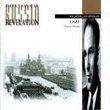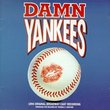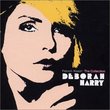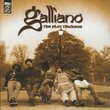| All Artists: Jah Wobble & the Nippon Dub Ensemble Title: Japanese Dub Members Wishing: 2 Total Copies: 0 Label: 30 Hertz Records Original Release Date: 1/1/2010 Re-Release Date: 4/20/2010 Album Type: Single, Import Genre: International Music Style: Number of Discs: 1 SwapaCD Credits: 1 UPC: 5024545589221 |
Search - Jah Wobble & the Nippon Dub Ensemble :: Japanese Dub
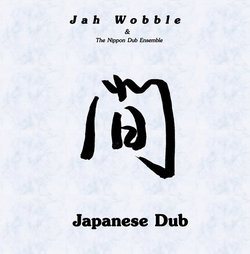 | Jah Wobble & the Nippon Dub Ensemble Japanese Dub Genre: International Music
Following the overwhelming success of his 2008 release, Chinese Dub, Jah Wobble - creatively adventurous music-maker and master of the cross-cultural collaboration - turns his attention to Japan, releasing a ten track albu... more » |
Larger Image |
CD Details
Synopsis
Album Description
Following the overwhelming success of his 2008 release, Chinese Dub, Jah Wobble - creatively adventurous music-maker and master of the cross-cultural collaboration - turns his attention to Japan, releasing a ten track album featuring himself alongside Joji Hirota (vocals, taiko drums), Keiko Kitamura (vocals, shamisen, koto), Clive Bell (shakahatchi) and Robin Thompson (hikaritchi, sho, shamisen) as the Nippon Dub Ensemble. The background to Japanese Dub is best explained by Wobble himself: For some time I've fancied having a crack at merging Japanese music with dub. I was very happy with the Chinese Dub album that I put together a couple of years ago, and was confident that I could do a similar job with Japanese styles. It can t be denied that traditional Japanese music is heavily influenced by Chinese music. However, paradoxically, there is something unique and unmistakable about Japanese music. To an extent this is due to their distinctive chromatic modes, but above all the Japanese are incredible reductionists. Somehow they take other cultures stuff, and in their own respectful way, rationalise it, reduce it, and thereby make it their own. I knew I wanted a selection of folk songs on this album, and I also wanted Japan s famous taiko drums to be represented (my bass with taiko drums is a marriage made in heaven). Luckily I know a man called Joji Hirota who has a great knowledge of Japanese culture generally, is an expert taiko drummer and sings like a Japanese Van Morrison. He sent me a selection of old Japanese songs to chose from and I immediately fell in love with Kokiriko, which is said to be the oldest known song in Japan (to be honest, I wish he hadn t introduced me to that tune because it drove me nuts. Similar to Phoenix and Dragon on Chinese Dub it entered my psyche, and I can t get it out. I wake up humming it in various keys and tempos, as well as in multitudinous instrumental arrangements, from solo mandolin through to absurd James Last style string arrangements. It haunts me as I try and sleep. This thousand year old melody tortures me on a daily basis). An underlying aesthetic principle that governs much Oriental (especially East Asian) music is referred to as jo-ha-kyu (or ya yueh in Chinese). It is a philosophy, or approach, that concerns movement; in its simplest definition it means beginning, middle and end. It can also be understood as slow, faster (and more complex), and sudden finish. This concept can be seen in all forms of Japanese art and culture, from martial arts to tea ceremonies, and in music and theatre. The biggest challenge to me on both Chinese Dub and Japanese Dub was reconciling jo-ha-kyu with rhythmic groovy dance music. Heavy dub bass is the ideal musical instrument to solve that conundrum. When phrased properly the bass can meld the rigid with flexible, the fixed with the fluid, and the soft with the hard. The bass truly is the king of instruments. Sometimes, as a bassist, I feel like the big geezer at the base of those human pyramids that you get at Chinese and Russian Circuses, taking the weight of the other players, allowing the ones above me in the pyramid to perform their miraculous acrobatics. I knew that if this was going to be a proper Japanese record, I had to attempt a track in a kabuki (highly stylized classical Japanese dance-drama) style. This presented a big challenge to me because I found kabuki to be a vast area with many styles existing within its compass. I kept it simple, opting for a classic Japanese chromatic mode, koto, played splendidly by Keiko Kitamura, with a hip hop style rhythm and heavy bass underpinning her. Of course, the beat box that I created the beat with is Japanese in manufacture. All my gear at home is Japanese. This album is Japanese in every sense of the word.
Similar CDs
| Liszt, Richter Piano Works Genre: Classical Label: Russian Revelation | |
| Galliano Plot Thickens Genres: Dance & Electronic, Jazz, Pop, R&B Label: Spectrum Audio UK | |
| Cezar & Julio Duo Project Genre: International Music Label: Mk | |

 Track Listings (11) - Disc #1
Track Listings (11) - Disc #1